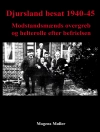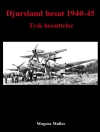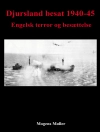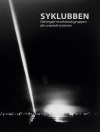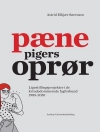The history of the Cold War has focused overwhelmingly on statecraft and military power, an approach that has naturally placed Moscow and Washington center stage. Meanwhile, regions such as Alaska, the polar landscapes, and the cold areas of the Soviet periphery have received little attention. However, such environments were of no small importance during the Cold War: in addition to their symbolic significance, they also had direct implications for everything from military strategy to natural resource management. Through histories of these extremely cold environments, this volume makes a novel intervention in Cold War historiography, one whose global and transnational approach undermines the simple opposition of “East” and “West.”
قائمة المحتويات
List of Illustrations
INTRODUCTIONS
Exploring Ice and Snow in the Cold War
Julia Herzberg, Christian Kehrt, and Franziska Torma
Cryo-history: Ice, Snow, and the Great Acceleration
Sverker Sörlin
PART I: SCIENCE: SITES OF KNOWLEDGE
Chapter 1. Snow and Avalanche Research as Patriotic Duty? The Institutionalization of a Scientific Discipline in Switzerland
Dania Achermann
Chapter 2. “An Orgy of Hypothesizing”: The Construction of Glaciological Knowledge in Cold War America
Janet Martin-Nielsen
Chapter 3. “Camp Century” and “Project Iceworm”: Greenland as a Stage for US Military Service Rivalries
Ingo Heidbrink
Chapter 4. Inuit Responses to Arctic Militarization: Examples from East Greenland
Sophie Elixhauser
PART II: POLITICS OF CONFRONTATION AND COOPERATION
Chapter 5. Creating Open Territorial Rights in Cold and Icy Places: Cold War Rivalries and the Antarctic and Outer Space Treaties
Roger D. Launius
Chapter 6. An Environment Too Extreme? The Case of Bouvetøya
Peder Roberts and Lize-Marié van der Watt
Chapter 7. Managing the “White Death” in Cold War Soviet Union: Snow Avalanches, Ice Science, and Winter Sports in Kazakhstan, 1960s–1980s
Marc Elie
PART III: CULTURES AND NARRATIVES OF ICE AND SNOW
Chapter 8. Laboratory Metaphors in Antarctic History: From Nature to Space
Sebastian Vincent Grevsmühl
Chapter 9. Cold War Creatures: Soviet Science and the Problem of the Abominable Snowman
Carolin F. Roeder and Gregory Afinogenov
Chapter 10. Negotiating “Coldness”: The Natural Environment and Community Cohesion in Cold War Molotovsk-Severodvinsk
Ekaterina Emeliantseva Koller
Chapter 11. An Exploration of the Self: Reinhold Messner’s Trans-Antarctic Expedition of 1989
Pascal Schillings
Conclusion: Histories of Extreme Environments beyond the Cold War
Julia Herzberg, Christian Kehrt, and Franziska Torma
Index
عن المؤلف
Franziska Torma works on the history of marine biology at the Rachel Carson Center for Environment and Society, Munich (project funded by the German Research Foundation, DFG). Her research interests include the history of science and the cultural and environmental history of the nineteenth and twentieth century.



